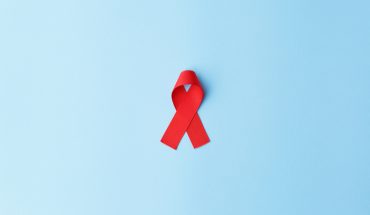The United Nations Declaration of Human Rights that everyone has the right to life could as well be extended to include the right to an “elevated cholesterol-free life”, a viewpoint by Dr Andrew Agbaje of the University of Eastern Finland, published in Frontiers in Pediatrics, concludes.
Globally, atherosclerotic cardiovascular disease has remained the leading cause of death in the past decades, despite huge advancements in medical treatment. The staggering cost of long-term treatment of atherosclerotic cardiovascular disease forms a significant proportion of annual health expenditure.
Based on strong evidence from studies among adults, risk factor assessments for atherosclerotic cardiovascular disease have been established by middle age.
However, emerging studies in the paediatric population describe two main problems. Firstly, the likelihood of genetic conditions which results in extremely high levels of cholesterol from birth with the risk of heart attack and sudden death by age 20 years. Secondly, the prevalence of elevated cholesterol in 20 percent of adolescents without genetic alterations which could rise to 25 percent of young adults within 7 years. This second category constitute the majority of people who progress to developing atherosclerotic cardiovascular disease in mid-adulthood.
There is a call to shift to prevention as the gold standard for addressing this deadly disease through the initiation of a universal paediatric lipid screening in the latest European Atherosclerosis Society Consensus Statement on new treatments and clinical guidance on familial hypercholesterolaemia. This preventive approach emphasizes early detection, management of lifestyle choices, and commencement of therapies where necessary. Strong evidence suggests that children with elevated cholesterol are at risk of death in their mid-forties. The screening for cholesterol at age 40 years is extremely late and damage to the vascular and cardiac organs is likely irreversible.
In the paediatric population, clinical trials and simulated intervention studies have shown that dyslipidaemia-related atherosclerosis is completely reversible if detection, prevention, and treatment are commenced early. Unfortunately, adopting a universal approach to preventing atherosclerotic cardiovascular disease from childhood has been unprecedentedly slow, with every 30 seconds wasted in indecision leading to another life lost in the future.
In the viewpoint, a public health prevention tool that has been used previously in tackling infectious diseases like Polio, Smallpox, and Covid-19 was proposed. Elevated cholesterol and dyslipidaemia, although a non-communicable risk factor, has a spreading pattern akin to an infectious disease, as it could affect a household, neighbourhood, and community, for instance, through poor diet and lifestyle habits.
“To combat this world’s deadliest disease a public health weapon might be necessary due to the urgency of this threat to human existence. Recommendations to screen children by age two years are being proposed which would detect familial hypercholesterolemia. However, the development of elevated cholesterol levels in adolescence without genetic predisposition is of equal priority as only 1 in 200 adolescents with elevated cholesterol levels might have received treatment,” says Andrew Agbaje, a physician and clinical epidemiologist at the University of Eastern Finland.
“Using the principle of vaccination or immunization card for infectious diseases, an adolescent cholesterol passport could be adopted on a global scale with specific timeline schedules for cholesterol screening. Prior to applying for a first driver’s licence or writing the final examination in high school, adolescents should have their first cholesterol assessment. This should be repeated once every ten years until age 40 years and documented in the cholesterol passport. It was recently shown that 2.53 quality-adjusted life years could be gained per person if detection and treatment are commenced early, especially in children with familial hypercholesterolemia,” Agbaje continues.
“It is likely that a universal adoption of adolescent cholesterol passport may reduce health disparities since people with low-socioeconomic status suffer disproportionately from atherosclerotic cardiovascular disease. Future generations beckon on us to summon the courage to combat dyslipidaemia-related atherosclerosis by first establishing and implementing a universal paediatric lipid screening. Therefore, public health experts, paediatricians, health journalists, and health policymakers should help disseminate this information as a matter of urgency,” Agbaje concludes.
Dr Agbaje’s research group (urFIT-child) is supported by research grants from Jenny and Antti Wihuri Foundation, the Finnish Cultural Foundation Central Fund, the Finnish Cultural Foundation North Savo Regional Fund, the Orion Research Foundation, the Aarne Koskelo Foundation, the Antti and Tyyne Soininen Foundation, the Paulo Foundation, the Yrjö Jahnsson Foundation, the Paavo Nurmi Foundation, the Finnish Foundation for Cardiovascular Research, Ida Montin Foundation, and the Foundation for Pediatric Research.
- Gut microbiome could delay onset of type 1 diabetes - 3rd April 2025
- The da Vinci 5 Robot Is Set To Transform Bariatric Care: - 31st March 2025
- Beyond money: the hidden drivers fuelling child food insecurity - 31st March 2025






